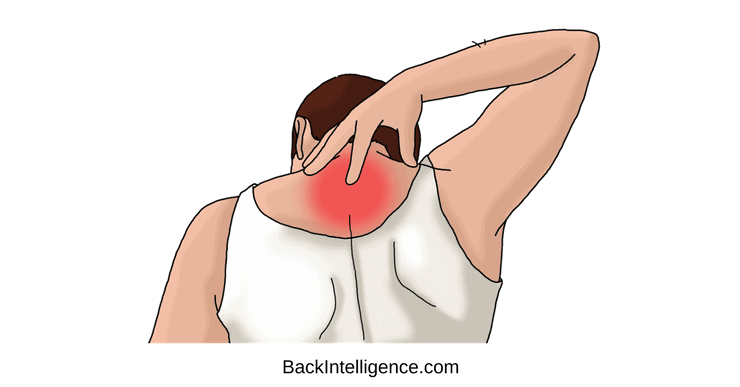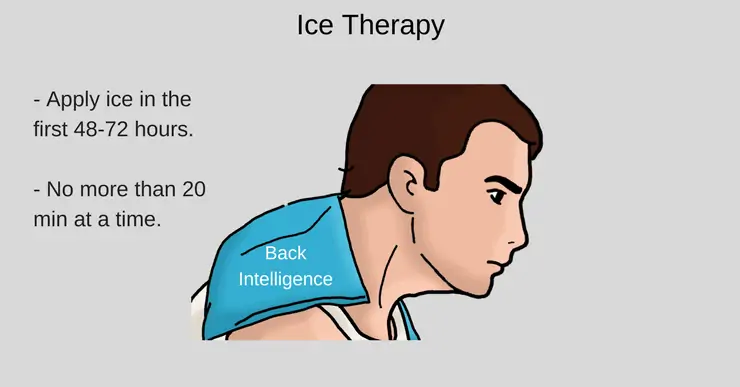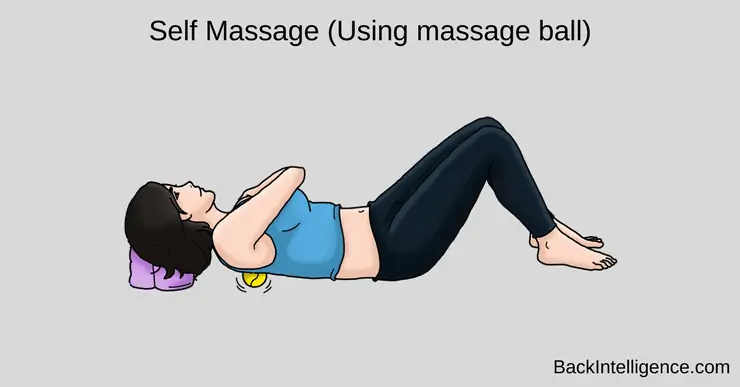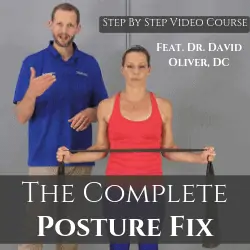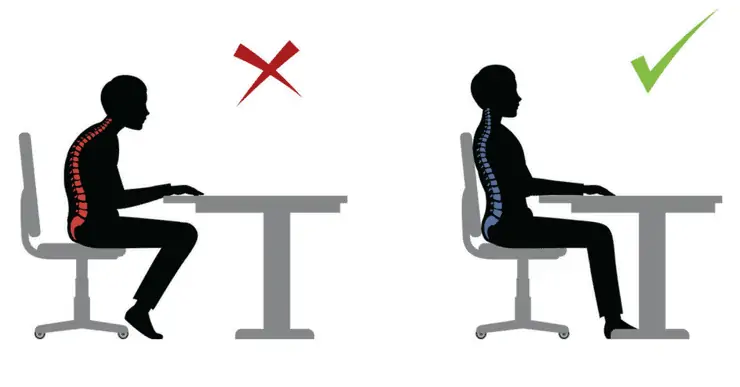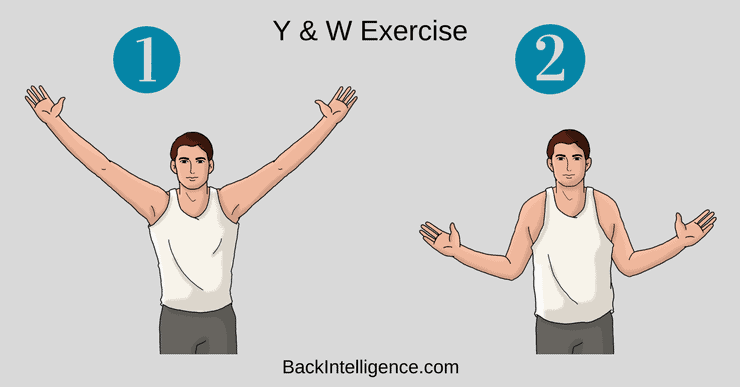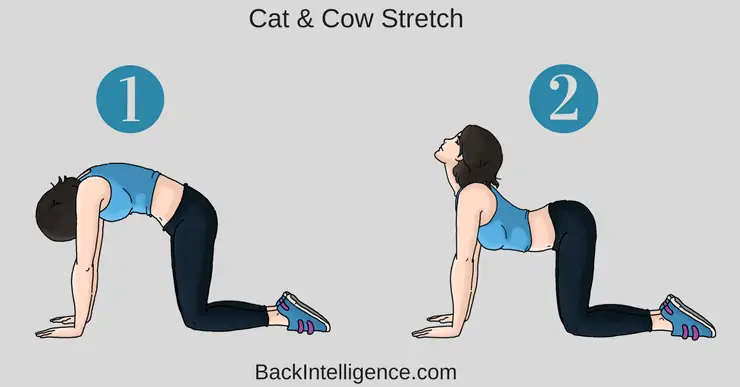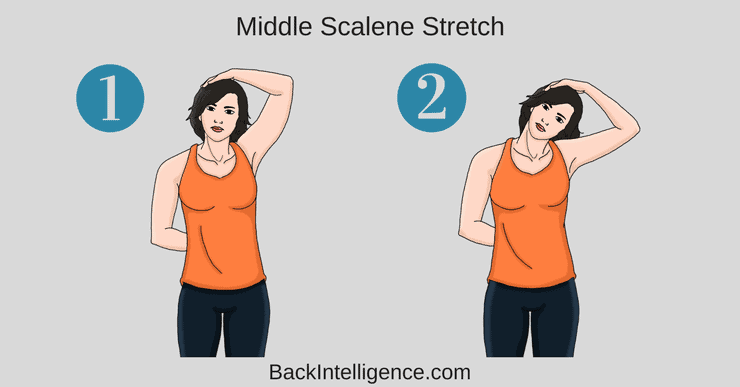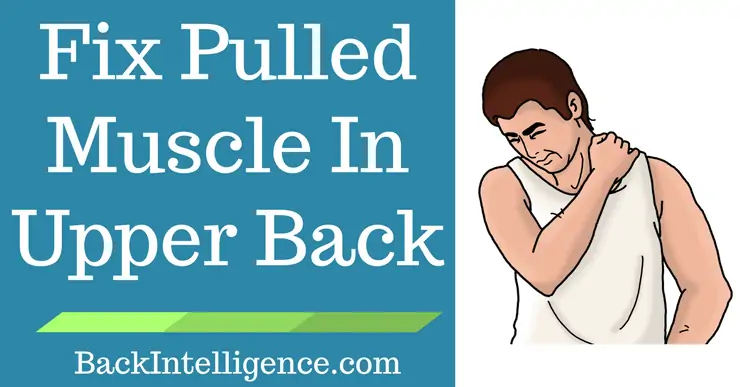
While pulling an upper back muscle is less common than pulling a muscle in your lower back, it can still have a detrimental impact on your life. A pulled muscle can happen anywhere in the thoracic spine (from the base of your neck to the bottom of your rib cage).
Upper and mid back pulled muscles can make it extraordinarily difficult to work at a computer and make sleeping very uncomfortable.
How Does A Pulled Muscle In Upper Back Feel?
- Pain in your upper back area in between your shoulder blades.
- Pain when you take a deep breathe in, cough or sneeze.
- Pain when you move your shoulders.
- Muscle spasm in the affected area.
- Headaches.
- Area may be tender to the touch.
Common Causes of Upper Back Pulled Muscle:
Pulled muscles in the upper back area are typically the result of:
- Whiplash.
- Reaching overhead for long periods of time.
- Improper heavy lifting.
- Carrying a heavy backpack or purse, particularly if you carry it on one shoulder.
- Poor posture for extended periods of time.
- Injuries from certain sports, such as weight-lifting, tennis and rowing.
- Being overweight.
Strains (more common) – A tendon or a muscle that is stretched or torn.
– Strains are typically caused by an overload and stretching of the muscle and tendon that results in a partial or complete tear.
Sprains – A ligament that is torn or stretched.
– Ligaments connect bone to bone at a joint, so this is considered a more serious injury and takes longer to recover from.
For practical purposes, it doesn’t matter if your back is strained or sprained because treatment and prognosis are the same for both types of injuries.
4 Best Recommended Treatments for a Pulled Muscle in the Upper Back
#1. Ice Therapy
Just like with a lower back pulled muscle, using ice therapy on the affected area for 10 to 15 minutes at a time, every couple of hours, for the first 48-72 hours will help to reduce swelling and inflammation in the area, minimize muscle spasm, and provide pain relief by numbing the area. After the initial 48-72 hours, applying moist heat to the area for 20-minute intervals will help to increase blood flow to the area and encourage healing.
#2. Self Massage
Similar to having a lower back pulled muscle, having a massage may help to decrease muscle tightness and pain in the upper back by increasing blood flow to the area, thereby promoting healing, as well as encouraging the release of endorphins.
Read more about self massage techniques
The Complete Posture Fix (With Dr. Oliver, DC)
Correct your Posture and Ergonomics, Ease Back & Neck pain and Increase your mobility.
Learn More
#3. Posture Correction While Seated
Because many pulled muscles in the upper back are the result of chronic poor posture, especially while seated at a desk, it is important to correct your sitting posture.
Proper sitting posture involves:
– shoulders positioned over your hips
– knees bent at 90 degrees
– feet flat on the floors (supported on a stool if your feet can’t reach the floor)
– elbows bent to 90 degrees (elbow should remain bent even when using your computer mouse)
– computer monitor at eye levels
– head positioned so that your ears are aligned with your shoulders
#4. Exercises And/Or Light Stretches
These three simple stretches will help “mobilize” the muscles and stretch out the the scar tissues that may have formed.
Furthermore, ONLY DO THESE STRETCHES after your pain has lessened… So you may want to start doing these only after 3-6 days have passed.
Exercise #1: W & Y Stretch & Retract
How to do it:
– Begin standing with your back straight.
– Make “W” shape with your arms. Bend both of arms to about 90 degree angle as you lower them to your stomach area and then squeeze your shoulder blades together.
– Now stretch out your arms to make a “Y” shape with your arms.
– Aim for 10 repetitions as you move dynamically between W & Y.
Exercise #2: Cat & Cow (Use low range of motion)
The cat and cow is a great spine mobility exercise that you can do to help energize your low back muscles.
How to do it:
– Begin by kneeling on all fours with your hands positioned under your shoulders and your knees positioned directly below your hips.
– Exhale and arch your spine gently.
– Inhale and tighten your core muscle while you round your back.
– Move dynamically through it.
– Aim for 10 repetitions.
Exercise #3: Upper Traps/Middle Scalene Stretch
This will stretch out the neck and upper back muscles (Scalene & Upper Trapezius) which can get very tight on individuals with this forward neck syndrome.
- Start either in a standing or seated position.
- Place one of your hands on the opposite side of your head and tuck the other hand behind your back.
- Now bring the head down towards your shoulder.
- Use the hand on top to press your head down – to get a deeper stretch (Not too hard).
- Hold for 20-30 seconds and do both sides
What to avoid?
Sleeping on Your Stomach!
When you sleep on your stomach you tend to turn your head to one side, which lengthens the muscles on one side of your neck, while shortening the muscles on the opposite side of your neck. This leads to a muscle imbalance and an increase in neck and upper back pain and restricts the joints in your neck and upper back from functioning normally.
Additionally, sleeping on your stomach causes your shoulder to fall forwards, into an anterior position. This results in your pectoralis muscles tightening, which can contribute to a cycle of neck, shoulder and upper back pain.
In Conclusion
While pulling a muscle in your back isn’t typically a cause for concern because the majority of injuries heal up within a month, they can still cause some serious pain and discomfort and impact your ability to function optimally. Trying some of the treatments outlined above may help to reduce your pain and get you back to your normal activities sooner!
Learn More
Related:
Ice Or Heat For Back Pain Relief
Upper back pain between shoulder blades
Fix Rounded Shoulders with exercises
Fix pulled lower back
Herniated Disc exercises
Sources:
https://www.ncbi.nlm.nih.gov/pmc/articles/PMC4748634/
http://www.jaypeejournals.com/eJournals/ShowText.aspx?ID=8372&Type=FREE&TYP=TOP&IN=&IID=645&isPDF=YES
https://bmcmusculoskeletdisord.biomedcentral.com/articles/10.1186/1471-2474-10-77
Licensed chiropractor, DC (Owner of Forme Clinic, Stoney Creek, ON, L8G 1B9)
Dr. Shaina McQuilkie graduated from Brock University in 2004 with a Bachelor of Kinesiology (Honours). She then attended D’Youville College, in Buffalo, New York and obtained her Doctorate of Chiropractic Degree in 2008. After graduating, Dr. McQuilkie practiced in a multi-disciplinary healthcare facility based in Hamilton, Ontario gaining experience treating a variety of musculoskeletal injuries.
